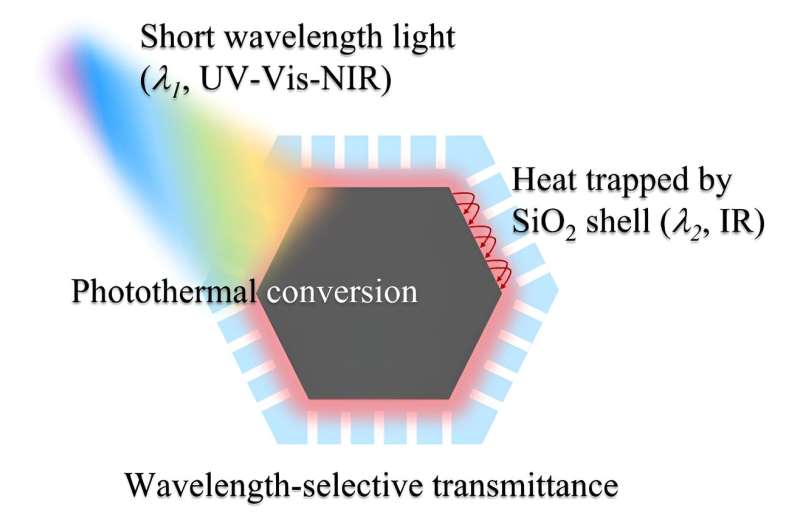This article has been reviewed according to Science X's editorial process and policies. Editors have highlighted the following attributes while ensuring the content's credibility:
fact-checked
trusted source
proofread
Solar-driven conversion of waste plastics into their building blocks

Photothermal catalysis, fueled by clean solar energy, offers an efficient solution for converting waste plastic into valuable chemicals. This catalytic process harnesses the power of solar energy and converts it into chemical energy. However, the development of photothermal catalysts that exhibit high conversion efficiency and catalytic activity poses significant challenges.
A recent breakthrough comes from a research team led by Prof. Jinxing Chen from Soochow University, China. They have successfully developed an integrated photothermal catalyst comprising c-ZIF-8 coated with a SiO2 layer. This innovative approach focuses on enhancing catalytic activity by minimizing thermal radiation loss and maximizing the localized heating effect of the catalyst.
The results were published in Chinese Journal of Catalysis.
This study introduces a novel catalyst design approach that involves the synthesis of ZIF-8 nanoparticles using a template method. To create an integrated photothermal catalyst (c-ZIF-8@SiO2), a layer of SiO2 is coated onto the surface of ZIF-8, followed by a high-temperature carbonization treatment. The internal carbon material within the catalyst absorbs solar energy and generates heat, while the outer SiO2 layer selectively allows penetration of solar light, which is then absorbed by the carbon core.
This design effectively reduces thermal radiation loss from the internal carbon core and enhances the local thermal effect during the photothermal catalysis process. Furthermore, the SiO2 shell provides a protective effect, resulting in the catalyst's high stability. Overall, this catalyst design strategy offers a universal method for enhancing the local thermal effect in photothermal catalysis and holds potential applications in the development of efficient photothermal catalytic systems.
By irradiating sunlight, the c-ZIF-8@25SiO2 catalyst can efficiently upcycle PET into valuable monomers. The PET glycolysis experiment under outdoor sunlight and the selective recovery of PET from mixed plastics further demonstrate the promising applications in photothermal catalytic PET glycolysis. Photothermal catalysis not only contributes to energy conservation and emission reduction, promoting green and sustainable development but also provides new ideas and methods for efficient chemical recycling of plastics.
More information: Xiangxi Lou et al, Highly efficient photothermal catalytic upcycling of polyethylene terephthalate via boosted localized heating, Chinese Journal of Catalysis (2023). DOI: 10.1016/S1872-2067(23)64435-3
Provided by Chinese Academy of Sciences





















